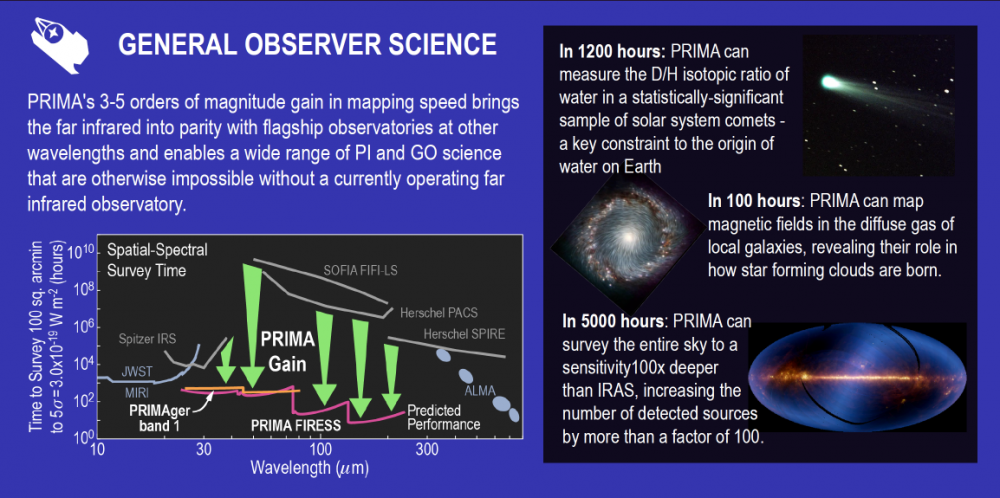NASA has just selected the PRIMA project (The PRObe for Infrared Mission for Astrophysics) for a phase A study, from among around ten proposals. This study phase, which will last one year, will enable the project to be evaluated in depth before a final decision is made. If PRIMA is selected, NASA will allocate a budget of one billion dollars for its development, with a launch scheduled for 2031.
PRIMA is a telescope designed to observe the far infrared, which will provide answers about the origin and evolution of planets, supermassive black holes, stars and cosmic dust.
France is playing a major role in this mission, thanks in particular to the participation of CNES, the Laboratoire d'Astrophysique de Marseille (LAM) and CEA, which are collaborating on the development of one of the project's key instruments, the PRIMAger imager. On a European level, the project also benefits from the support of SRON (Netherlands) as well as institutes in Italy and the United Kingdom (Cardiff), reinforcing the international dimension of the team.
During a three-day stratospheric balloon flight, the COMCUBE collaboration successfully tested its space gamma polarimeter COMCUBE, an instrument that will enable the measurement of the linear polarization of gamma-ray bursts. This flight validates the COMCUBE-S project, a swarm of twenty-seven nanosatellites equipped with this new technology by 2030.



